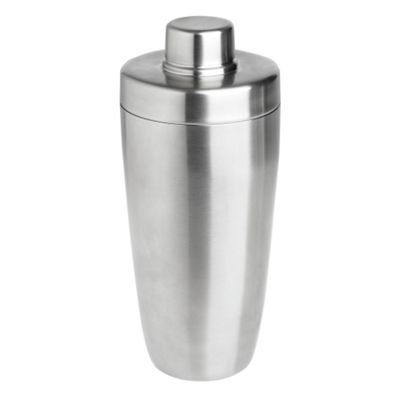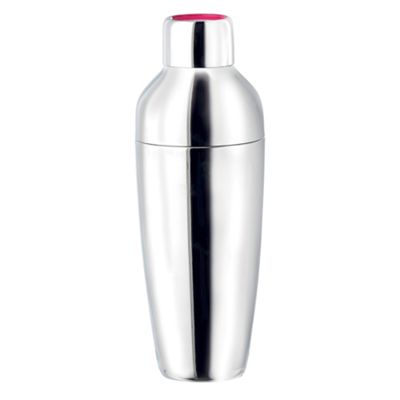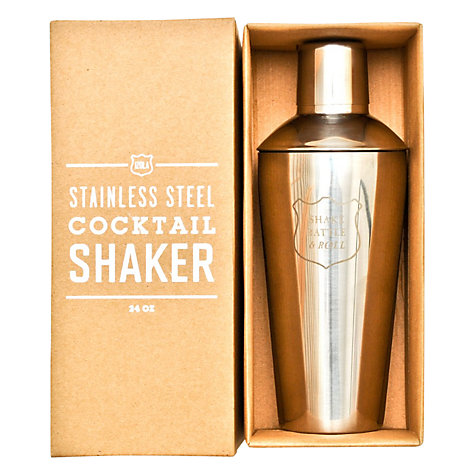My love for cocktails was ignited at an early age by the spectacle of a
Mai Tai arriving at the table, amid great pomp and ceremony, fizzing sparklers
and virtually obscured by a troupe of plastic monkeys hanging from the parasols
and pineapple that adorned the enormous glass. By the end of the 80's, I had a
spent a summer in Corfu, shaking up Grasshoppers, pouring Long Island Iced Teas
and mastering the art of layering a B52.
The 90's marked a big change in the fashion for cocktails. They never
went away, but tastes changed. Martini style cocktails like the Cosmopolitan
took over from creamy Piña Coladas and flavoured vodkas were big
news. Cocktail making is enjoying a renaissance, emerging from the
wilderness years of parasols, sparklers and plastic monkeys and into a new era
of exotic spices, flame grilled fruit and fresh flowers. Some recipes are
incredibly complex, with rare ingredients that are tricky to source, but equally,
there is a retrospective move to the simple cocktails of yesteryear. Iconic
characters such as James Bond and laterally, Don Draper, have ensured that
straightforward drinks, well made, will always have a certain kudos. Basically,
there's a level of cocktail making for all abilities and pretty much anything
goes - just don't put a parasol in it...
It can be a little overwhelming when recipes use an array of unusual
terms, but don't be put off. This post hopes to outline some of the most common
terms that crop up and give their meanings as well as giving the lowdown on the
equipment you really need to get started. It is not absolute and is not
intended for aficionados, but for those who fancy dabbling with a bit of
mixology and don't know their muddling stick from their jigger.
Cocktailing Terms
Bar Spoon
A bar spoon is just a long handled, small bowled spoon similar to a
sundae spoon, used for stirring drinks and 'floating' alcohol.
Bitters
Cocktail recipes often call for the addition of bitters, which come in
an array of flavours, the most recognisable being Angostura. Think of bitters
as the final touch of seasoning to your recipe. Without them, your drink will
probably still taste fine, but they can add an extra layer and little more
complexity to the outcome. When a recipe calls for bitters, a dash simply means
a gentle shake of the bottle, although each brand has it's own kind of pourer
so what comes out can vary. When in doubt, go easy, although by all means,
experiment to find what suits you. I'll be looking at bitters in more depth in
a future post
Cocktail Shaker
You can make cocktails without a shaker and not all require it, but
frankly, it makes life so much easier and it's all part of the fun of creating
them at home. There are many different styles out there, but in the main, they
fall into two categories. There are what's known as the Boston Shakers - a
metal beaker with a glass beaker that fit together and the more common style
with a fitted lid and often with an integrated strainer. If you are a beginner,
I recommend you avoid the Boston Shaker. It's a lot trickier to handle and one
slip means you've got a sticky floor and a big dry cleaning bill. It is great
for professional bar tenders as it's quicker to come apart and easy to clean,
but for the majority of us, a secure lid and an inbuilt strainer are far more
useful. That said, never assume that the lid of you shaker is totally secure.
Always keep your hand over the top whilst shaking and use a cloth to stop your
hand freezing to the outside of the shaker.
Collins
A Collins cocktail is traditionally made with a lot of gin, the juice of
a lemon, sugar syrup and topped up with soda, over ice, in a large bar glass. A
'Collins' glass therefore, generally refers to a large tumbler.
Cordial
Cordials are generally non alcoholic, sweet drinks made from fruits,
herbs or berries (although not exclusively) that are used to flavour and
sweeten drinks
Creme
In cocktail terms, creme does not mean cream, but refers to a
group of drinks that are similar to liqueurs but with a very high, natural
fruit or floral content, giving them an intense and more natural flavour.
Probably the most well known is Creme de Cassis, a blackcurrant liqueur used in
a Kir Royal, but there are many, many more, including Creme de Framboise and
Creme de Violette.
Daiquiri
A basic daiquiri is rum, lime juice and a little simple syrup, shaken
over crushed ice and served in a stemmed glass, like a martini or margarita.
Variations on the original involve adding fruit to the basic recipe, such as
Banana Daiquiri and Strawberry Daiquiri.
Double Strain
Sometimes it is necessary to strain a cocktail twice to ensure a clear
liquid without fruit pips or particles of mint leaf. For example, the Southside
cocktail should have a greenish hue as it uses a lot of mint, but there should
be no pieces of mint floating in it and so it has to be double strained. If you
are using a cocktail shaker with an integral shaker, just pour straight from
that, through another strainer, into the glass
Dry Shake
When a cocktail recipe asks that you 'dry shake' the ingredients, it
simply means to shake them without ice in the shaker. This method can be used
for cocktails that contain egg white, as a way of frothing it, without having
to use a whisk.
Floating
If a recipe calls for alcohol to be 'floated', it means layered on top
of the drink below to keep the two separate. This is done by pouring carefully
over the back of a spoon, in the same way that you would float cream on a
coffee.
Frozen
The term frozen is used to refer to cocktails made with ice in a
blender, resulting in a kind of alcoholic slushy. Frozen margaritas and
daiquiris are the most common.
Hawthorn Strainer
A Hawthorn strainer refers to a particular style of strainer used in bar
tending that has a spring around the edge that allows it to fit inside the rim
of the glass, stopping ice etc from slipping in. The spring like edge has the
added bonus of working as a whisk which can be useful. Some cocktails call for
the inclusion of egg white to provide texture and one method is to whisk it in
the shaker before adding the other ingredients. In the main though, a strainer
is not required if you are using a shaker with an integral one, but
occasionally recipes call for the cocktail to be double strained.
Highball
A highball is a drink with ice and mixer, served in a tall, straight
sided glass, referred to as a 'highball' glass
Infusion
An infusion is when one ingredient or more, is added to a liquid, just
as a tea bag is added to water, to allow the flavour to be imparted. Alcohol
can be infused with all manner of flavours, quite easily, by adding ingredients
and storing in an airtight container. The longer you leave the alcohol to
infuse, the stronger the flavour, but generally, a week is a good marker for
getting a noticeable result. Take a look at my posts about Vanilla Vodka and
Cherry Vodka to get an idea. Tea, is a notable exception in that it should be
left no longer than an hour or so as the flavour become bitter and woody.
Ice
I cannot stress enough, the importance of ice and preferably quite a lot of it. Most cocktails will require ice to some extent, both for shaking and serving, so a freezer with enough space for a lot of ice trays is a must. American style fridge freezers with ice makers are ideal. Crushed ice is a bonus, but rarely an absolute requirement. However, if you decide you prefer it and you don't have an ice maker with a crushed ice setting, then you can buy table top ice crushers that allow you to grind the ice as you need it. I'll be taking a look at the best of those in a future post.
Jigger
A jigger is a measuring cup used to measure out quantities for drinks.
Often a jigger will be double sided, giving one measure on one side and two on
the other. You can buy stainless steel jiggers quite cheaply, but it is not
entirely necessary as long as you have some of measure. Confusingly, a jigger
is also a unit of measure, meaning about an ounce and a half. i say
confusingly, because a jigger cup will not necessarily be an ounce and a half.
Personally, I use a 1 oz shot glass as I have plenty to hand, but the important
thing is to use a measure. When you alter the ratio of ingredients, you alter
the result dramatically which is great if you want to experiment, but not if
you are trying to recreate a recipe. Also, even if you are just experimenting,
it makes sense to keep a close eye on what goes in so that successes can be reproduced.
Julep
A Julep is a type of cocktail, traditionally using bourbon or rye
whisky, served over a lot of crushed ice, sweetened with sugar syrup and
garnished with mint. It is served in a 'julep' tin which is traditional style
metal beaker.
Liqueurs
Like cordials, liqueurs are generally made from fruit, herbs or berries
with sugar, but steeped in alcohol and with alcohol content of between 15 and
40%, tending towards the lower end of the scale.
Lowball
A lowball is a drink with ice and a mixer, served in a short glass or
tumbler, often referred to as a 'rocks' glass.
Margarita
A traditional Margarita is a cocktail made with tequila, triple sec,
lime juice and salt on the rim of the glass, but there are so many variations
that it has become a style of cocktail in it's own right. It is traditionally
served in a margarita glass, a variation of a champagne coupe.
Martini
A traditional martini is just gin and vermouth shaken over ice with a
twist of lemon, but the term martini is now used to refer to all manner of gin
and vodka cocktails that are shaken over ice and served in long stemmed martini
glass. This style of glass is used to stop the drink from becoming warm due to
transfer of heat from the hand as it is not served over ice
Muddle Stick
'Muddling' is a term often used in cocktail making and it basically just
means, squishing to release flavour. For instance, in a Mojito, the mint and
the lime are muddled together to release the oils from the mint and the juice
from the lime. A muddling stick is not a necessity, as generally, you'll be
able to find something in the kitchen that will suffice, but they aren't
terribly expensive either and it is handy to have the right tools for the job.
Generally, a muddling stick will look a bit like a mini truncheon, smooth and
rounded at the end although I have also seen them with knobbly ends, which
could be useful, but more annoying to clean. I'll be taking a look at a
selection in a future post.
Pony
A pony is a unit of measurement equal to 1 fluid oz.
Rocks
Rocks just means ice and a 'rocks' glass is a low tumbler with room
enough for ice
Simple Syrup
Lots of cocktails call for the addition of simple syrup which is pure
cane sugar syrup that is very easy to make using sugar and water, but it is
even easier to buy and possibly cheaper too. Many large supermarkets now stock
it in the drinks section. Alternatively, follow my recipe for Lavender syrup by clicking here and just leave out the lavender.
.jpeg)






.jpeg)
.jpeg)
.jpeg)
.jpeg)
.jpeg)
.jpeg)
.jpeg)
.jpeg)
.jpeg)



.jpeg)




.jpeg)





















